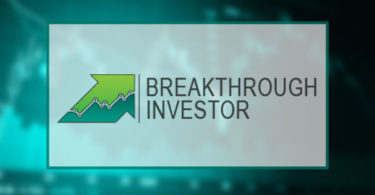Let me share with you a unique indicator that could boost your chances of scoring some big gains.
It’s one of my personal favorites.
It’s a metric that’s not as well known as price-to-earnings ratio (P/E) or even discounted cash flow, but it’s behind the advice given by two of the world’s largest wealth management firms to their wealthiest clients.
Deutsche Bank invented it. Goldman Sachs Private Wealth Management uses it extensively in its stock selection.
Cash return on capital invested (CROCI) may not sound like an important cause of stock returns…
But using this formula consistently leads to reliable 30% annual returns.
I first learned about it at a lunch presentation at Goldman Sachs Private Wealth Management. I was seated next to then-Chairman Jim O’Neill when the company’s quantum division (cool name, eh?) made its presentation.
My jaw dropped. I kept the slides (and still have them!).
Now, not every stock with a good score will generate 30% returns… After all, a tailwind boosts returns, while a financial crisis evaporates them. And some sectors do better than others – like oil, mining, auto, capital goods, consumer staples, discretionary retail and tech.
I’ve been using this formula since 2010. In bull and bear markets, as well as corrections, it’s the secret sauce that takes a portfolio from good to great.
As part of Operation Save Your A$$, I’d like to let you in on this powerful hedge fund secret… and show you why it leads to such astonishing returns.
[First Look: Used on board SpaceX Dragon, one device could change medicine forever…]
Show Me the Money
In the simplest terms, CROCI measures how much cash a company produces on the capital it has had invested in it. It’s a measure of efficiency. It’s harder to manipulate cash than it is to manipulate earnings or profits. So CROCI paints a truer picture.
The higher the CROCI, the better. (In fact, I invest only in companies with a CROCI score of 10 or higher.)
It’s almost obvious: Companies that produce more cash on the capital they have perform better. They produce more cash by generating more sales and having fewer expenses. For example, if you don’t need to spend lots of money on capital goods (e.g., airplanes), can use the same machinery for years, have fewer staff members and generate lots of sales (demand)… you get more cash.
But of course, that is also too simple. High-return companies trade at a persistent and substantial premium… yet have significantly outperformed as their assets and cash flows have grown.
Let me explain…
The market is willing to pay a premium for companies with high cash growth. (After all, cash is king.) When we look at the top 25% and the bottom 25% of CROCI companies by measuring their gross cash invested, companies with low cash returns tend to generate slower growth, and – no surprise – companies with high cash returns tend to generate faster and more sustained growth.
Research shows that while companies with high cash returns are relatively expensive, they outperform nevertheless. Yet most investors think such companies won’t continue growing and are too expensive.
That’s simply not the case.
This is a hugely important idea.
A structurally well-positioned company should sustain outstanding earnings over multiple years. Assuming it does, the market will continue to value it at a premium.
There is, therefore, an inherent “valuation opportunity” in owning long-term leaders over longer-term holding periods.
[Hot Tech: Brand new invention popping up in every single one of the Top 100 hospitals in America]
Triple-Digit Gains
That’s why, in just the past two years, I’ve achieved triple-digit gains from stocks like Etsy, Crocs and Best of the Best.
Each of these companies had a good CROCI score. Each was in the top 15% of all companies measured and ranked by CROCI.
They also had good P/E ratios, good sales growth and consistent momentum. But by further narrowing down by CROCI, I was able to laser-focus on these companies in particular… and they soon became market winners.
Etsy – the online marketplace for creators of handmade arts, crafts and other home goods – was able to generate lots of profits as its sales were boosted by lockdown buyers.
Those cash sales translated to profits because the company churns out a lot of cash relative to the amount of capital it invests. It is an efficient maker of money. In other words, it is good at turning income into profits because its expenses are low.
For Best of the Best – an online lifestyle competition platform – lockdown viewers started playing the types of games it features more often.
But this wasn’t a gamble on consumer behavior.
We knew that once sales increased, they would have an outsized impact on profits. That’s because the company had a high CROCI (again, that means it’s good at converting cash into profits).
Crocs was a similar case. During the lockdown, people wanted comfort, and the company’s Instagram campaign boosted sales.
We didn’t know the company would launch a campaign or how people would react to it, but we knew Crocs had a great CROCI score. Once we saw sales come in, we knew they would exceed expectations because the company converts sales into profits more efficiently than companies with lower CROCI scores.
It’s pretty simple… and highly effective.
These are just a few of the countless wins I’ve uncovered thanks to using CROCI.
By drilling down to what really moves a stock, you can use one of the biggest hedge fund secrets to achieve truly great returns.
But even better, this is the strategy I use in my elite research service, GVI Investor. And right now, you have the opportunity to join. See this tool in action and learn how you can become a subscriber right here.
[Bill O’Reilly and Alexander Green: The Biggest Healthcare Innovation in Half a Century]


Leave a Comment